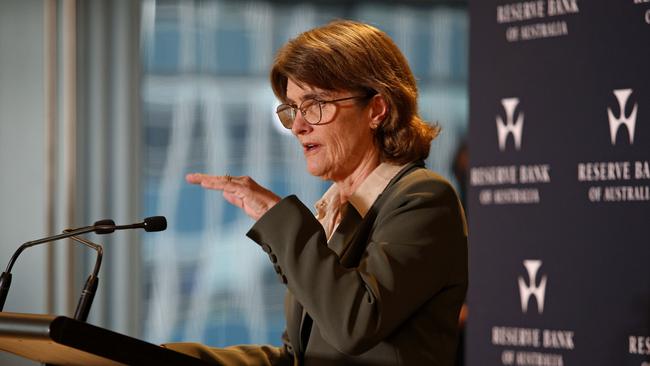
Like the populist temper of the times, the monthly measure is “volatile”, the RBA governor reminded all players, and could land with a “2” in front of its annual rate when it is released on Wednesday morning.
But beware: the August consumer price index figure has been zhuzhed up by federal and state bill relief.
“Headline inflation is expected to fall further temporarily, as a result of federal and state cost-of-living relief,” the RBA board said on Tuesday after keeping the cash rate on hold. “However, our current forecasts do not see inflation returning sustainably to target until 2026.”
Naturally, governments facing voters in the not too distant future and worried about their own sustainability will be massaging every data point.
Some in politics, business and the labour movement will immediately claim, or hint with heavy breathing, that it’s mission accomplished in beating back inflation: cut rates now.
All things considered, Bullock’s song remains the same: underlying inflation is still too high and the RBA board is far from ready to loosen its monetary screws.
Do not expect a cut in interest rates until next year.
And it’s still possible the central bank will raise its cash rate if demand in the economy remains above its supply capacity for longer than forecast.
At her post-meeting press conference, the RBA governor emphasised that board members were focused on underlying, not headline, inflation and that their preferred measure had to trend down consistently and then stay in the 2 to 3 per cent target band before there was a cut in rates.
Other central banks have taken big and little steps to cut interest rates, but in its statement the board highlighted the whole tentative business around these turning points.
Those peer central banks “are removing only some restrictiveness and remain alert to risks on both sides, namely weaker labour markets and stronger inflation” and in any case, as Bullock said, some had higher rates and unemployment, but lower inflation than we have.
According to the RBA chief, Australia would not simply follow the guide of the US Federal Reserve, which delivered a super-sized rate cut last week, because our “disinflation” experience was a lot different to theirs.
US underlying inflation is around 2.5 per cent, while ours is stuck at close to 4 per cent – and still our cash rate is lower than the US federal funds rate.
Importantly, rather than assessing the cases for a hold or hike, as in previous meetings, Bullock revealed the board considered if anything had changed in seven weeks to force it off its stalemate.
By the time the RBA announces its next interest-rate decision, on the day of the Melbourne Cup and US elections, it will have kept its restrictive cash rate at 4.35 per cent for a whole year.
Economists judged Bullock’s responses to reporters as signalling the bank was digging in for a longer fight on inflation, fortifying the case for holding rates at their current level, much to the dismay of borrowers.







Michele Bullock has fortified the Reserve Bank’s defence shield against opportunistic political assaults ahead of an expected statistical dip in headline inflation.